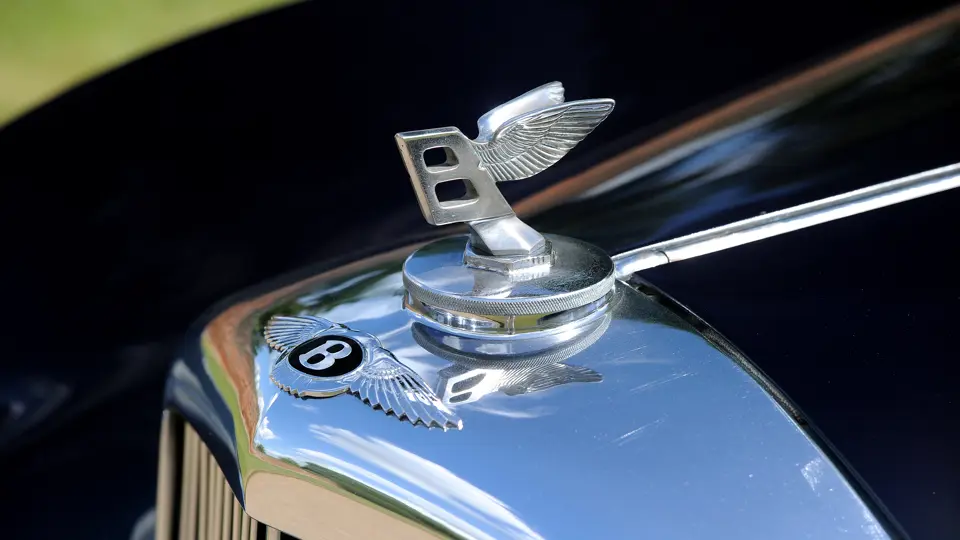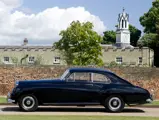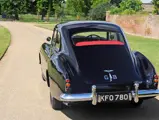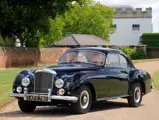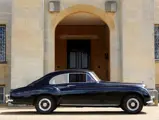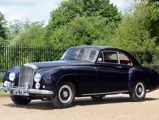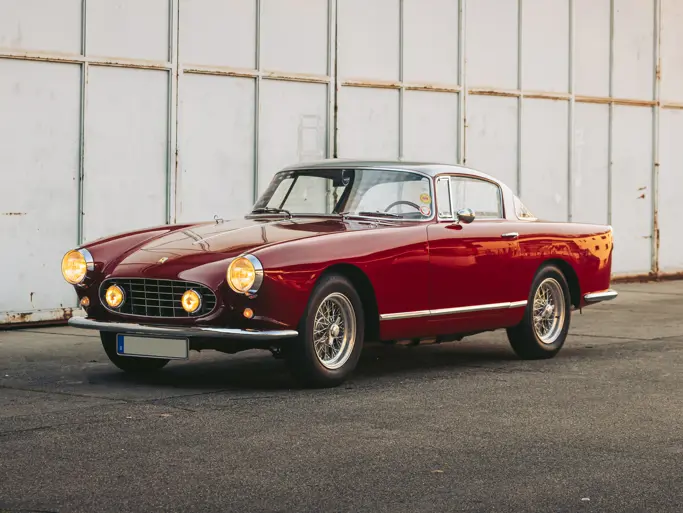158 bhp, 4,566 cc inline six-cylinder engine, dual SU H-6 carburettors, four-speed automatic transmission, independent front suspension with wishbones, coil springs and an anti-roll bar, live rear axle with semi-elliptic leaf springs, and four-wheel hydraulic drum brakes. Wheelbase: 120"
- The penultimate Mulliner fastback built
- Bentley’s flagship model and the world’s fastest sports saloon of the period
- Known history from new
- Beautifully finished in original colours of Midnight Blue with red trim
No post-World War II Bentley has acquired such cachet as the R-Type Continental, which in its day was the world’s fastest sports saloon.
In the period immediately following the end of World War II, Rolls-Royce took the unprecedented step of commissioning hard tooling for what would become known as the Standard Steel Saloon. The Standard Steel Saloon fulfilled the company’s commercial requirements but not necessarily those of all its customers, and it was for this select and demanding clientele that the Bentley Continental was created. Initially named “Corniche II,” the new model was conceived as a fast, relatively lightweight grand touring automobile. However, once production commenced, the model name was revised to the “Continental Sports Saloon,” a revival of the pre-war “Continental” designation.
The Continental shared its basic chassis layout and many of its suspension, steering and braking components with the Mark VI, however, any similarities ended there. Fitting the bespoke nature of these cars, it is reported that the weights of each chassis varied somewhat, depending upon their individual specifications. As production continued, chassis weights were reduced, culminating in the all-welded chassis, which saved nearly 30 pounds thanks to the elimination of rivets.
The H.J. Mulliner Sports Saloon design was the product of an extensive joint effort between Mulliner and Bentley, with initial design consultation by Pinin Farina. Rolls-Royce designer John Blatchley extensively tested clay models of the new body design in the Rolls-Royce Hucknall wind tunnel facility, ensuring a low drag coefficient and stability at speed. The sleek bodies were easily distinguished by a fastback deck, tapered rear fenders and a curved windscreen, all in the interest of rapid and quiet high-speed cruising. The bodies provided a substantial weight savings, thanks to Mulliner’s expertise in all-aluminium body construction.
While the first 89 Continentals were equipped with four-speed manual gearboxes, the first automatic transmissions appeared midway through Series C production. The automatic transmission featured four forward speeds, wider ratio spacing than that of the manual gearbox and a direct drive fourth gear. All automatic-equipped cars utilised a shift lever mounted on the steering column, and in all, 166 cars were fitted with manual gearboxes, while 42 examples were equipped with the automatic transmission.
The sleek, lightweight bodywork, B-60 engine, higher gearing and a modified suspension combined to provide not only high-speed, long-distance touring capabilities but also surprising fuel economy of approximately 20 miles per gallon. The Bentley R-Type Continental was capable of sustained speeds of 80 miles per hour in second gear, 100 miles per hour in third and over 120 miles per hour in top gear, perfectly meeting Bentley’s goal to provide the fastest, most comfortable and best-appointed high-speed tourer on the market. Additionally, styling was understated compared to the Rolls-Royce and marked one of the early instances where the two companies began to differentiate themselves. In all, 208 of these fine motor cars found the favour of buyers during the model’s four-year production run. They have since proven their quality and concept, remaining among the most coveted and sought after acquisitions of knowledgeable collectors.
Chassis BC7E
The car offered here, BC7E, was the penultimate H.J. Mulliner R-Type Continental to be built. BC7E was supplied new through Jack Barclay Ltd. for delivery to a Mr. Brittain of Northern Ireland. According to the Continental Registry, we also know the car was supplied with optional extras including a Time Trip Chronograph, an electric aerial, badge bar, bench-type front seats and more. The car was finished in a very elegant shade of Midnight Blue with a red leather interior, the very same colour combination it wears today. Following Mr. Brittain’s ownership, BC7E was acquired by J.H. Hopwood of England in November 1957.
Subsequent owners included Dr. I. Reid Entwistle (1965) and P.K. Tupman, in whose family the car remained for quite some time, as it is known that the owner after 1977 was Mrs. P.M. Tupman. In the 1970s the car received a major mechanical overhaul by Gibson Engineers in Leeds. It changed hands once more in 1994 to Mr. John Jeeves of the UK.
In 2008, after changing ownership, BC7E was treated to a thorough restoration. The gearbox was replaced, as were the electrical wiring (where necessary) and alternator. Following this work and a general tune-up, the car covered 1,600 trouble-free miles in two weeks on a tour of Western Isles.
By June of that year, the owner elected to improve his R-Type further still and commissioned cosmetic work to include the paint and bodywork as well as other mechanical elements, which were not to his exacting standards. The car was stripped to bare metal, the chassis was checked, and the condition of all the mechanical components was thoroughly inspected for any faults. The interior was stripped of all glass, chrome, door panels and seals. At this time the engine was also refurbished. The body was primed and four coats of factory solvent-based Midnight Blue paint were applied. In all, the restoration work took around seven months and 720 hours of work, bringing BC7E back to as-new condition. It should be noted that the car was not fitted with rear-wheel spats when it left H.J. Mulliner’s, and the only deviations from its original specification are the omission of the picnic glasses in the door panels, the removal of the aerial and the fitting of an alternator, all of which are inconsequential and easily reversible improvements to the car.
Since completing its restoration, the car has been used sparingly and kept in a climate-controlled environment. An especially desirable R-Type Continental, this Bentley, with its large 4.9-litre engine and optional automatic gearbox, is ideally equipped for future concours events and certainly gran turismo motoring, for which it was intended.





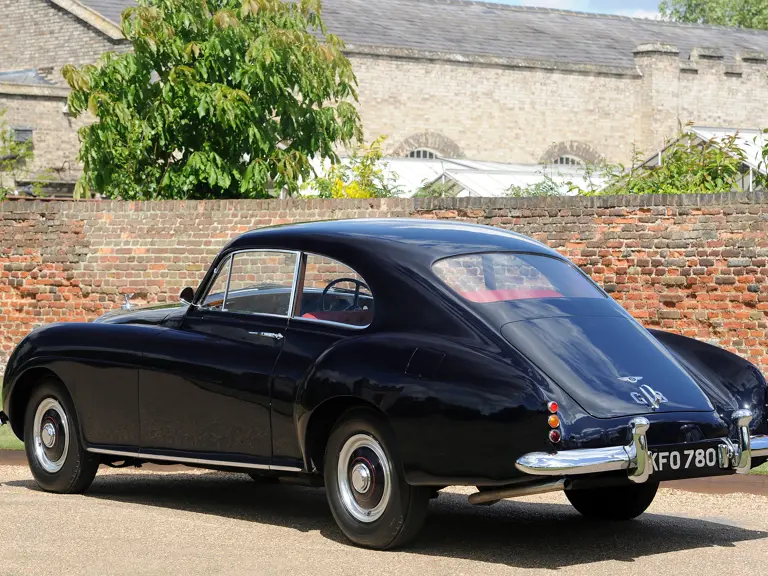
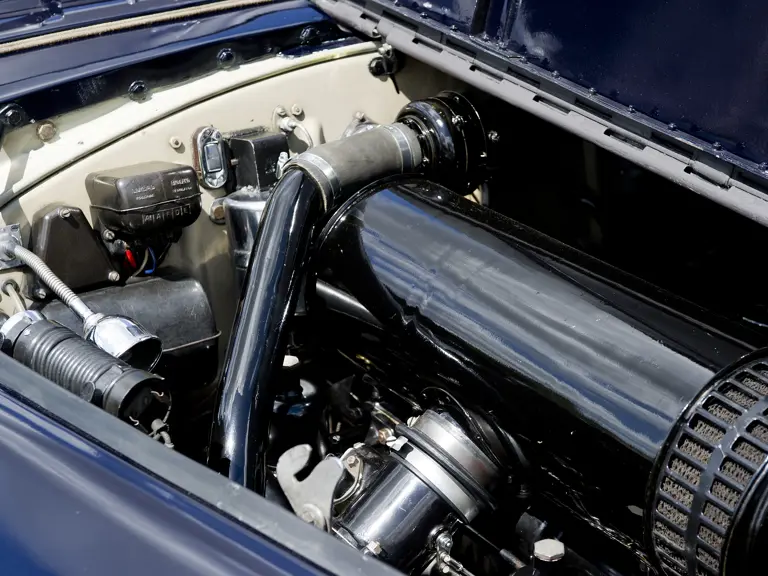




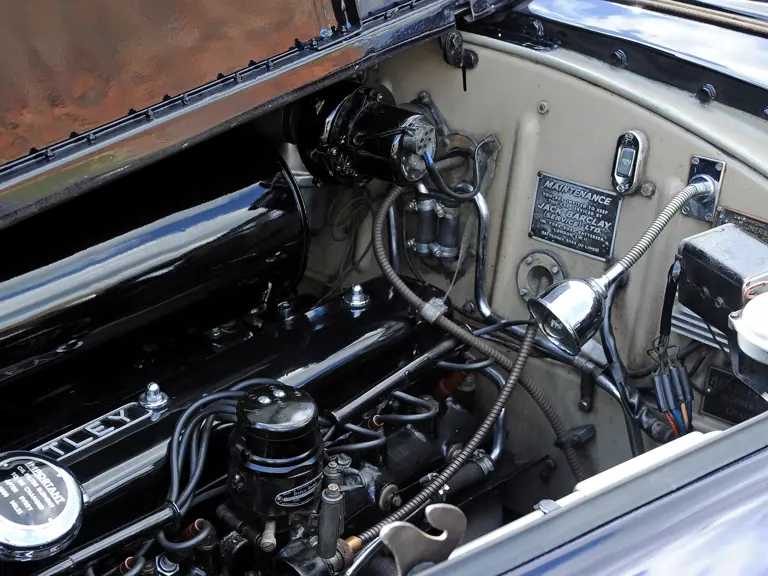
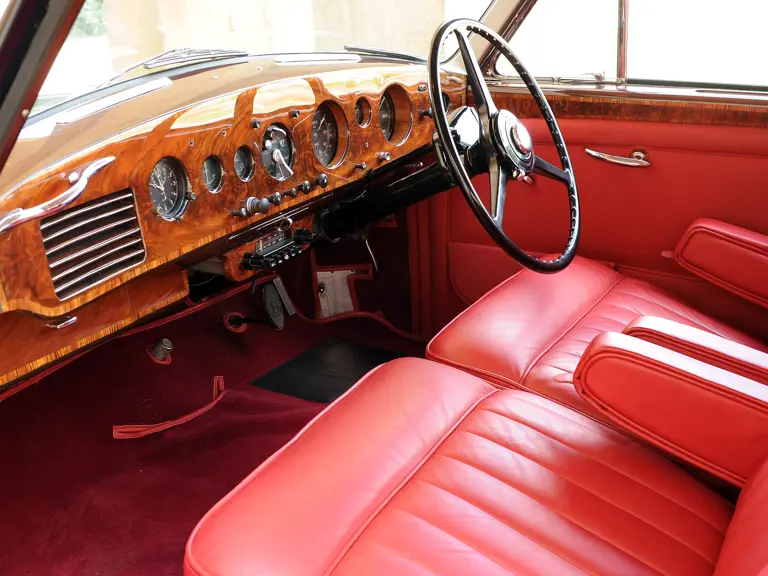


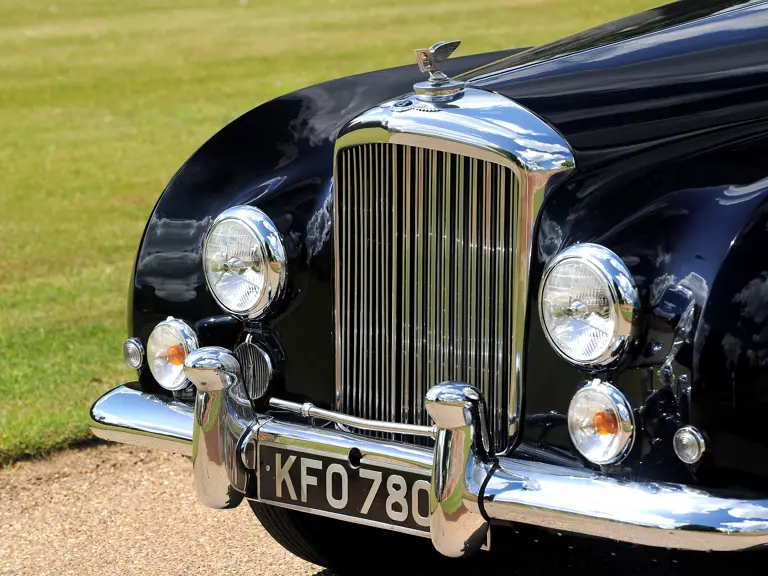
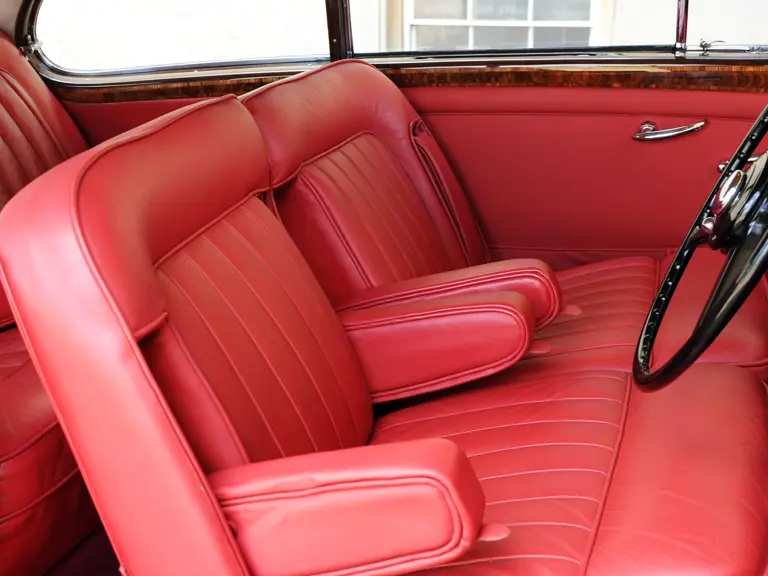

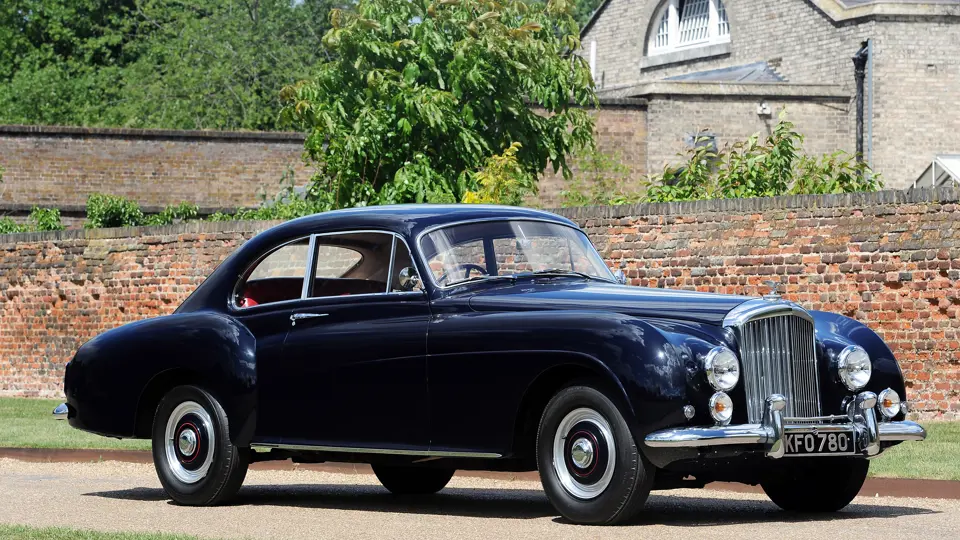
 | United Kingdom
| United Kingdom

